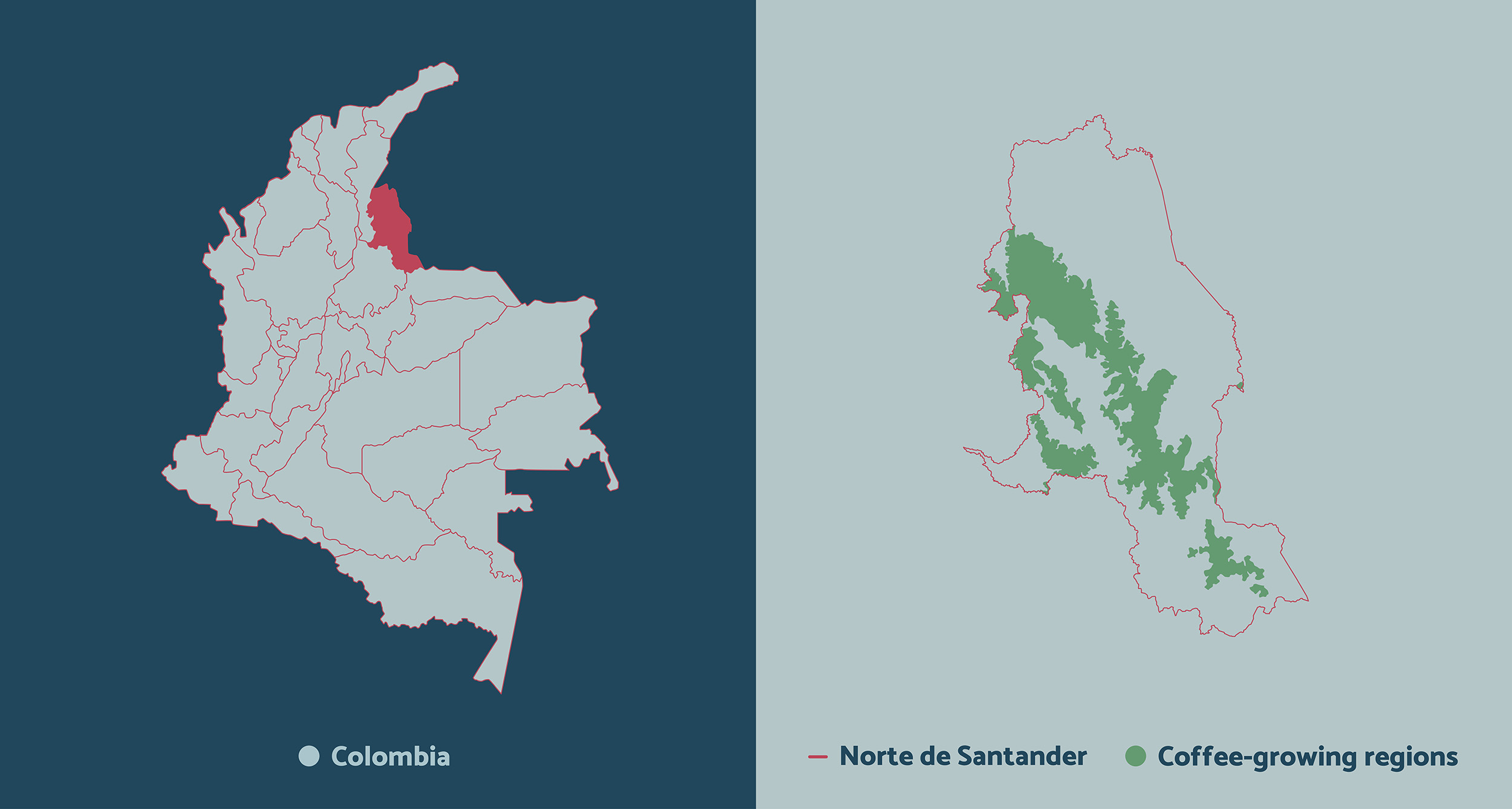Harvest: October–December (main crop), March–June (mitaca)
Elevation: 800–1,900 metres (2,600–6,200 feet) above sea level
Rainfall: 1,100–2,400 millimetres (43–94 inches)
Temperature: 17°C–27°C (63°F–81°F)
Norte de Santander, in the northeast of Colombia, is the site of the country’s first commercial coffee plantations. Coffee was brought into Norte de Santander from neighbouring Venezuela, and by 1808 the first crops were sent back via Venezuela to be exported (Palacios 2009).
Coffee spread rapidly in the department, and throughout the nineteenth century, Norte de Santander was the epicentre of Colombian coffee production. By the 1890s, coffee production was well established in both Santander and Cundinamarca, but Norte de Santander produced more than half of Colombia’s coffee, exporting 120,000 bags per year (Ocampo and Botero 2000).
 Cúcuta, in Norte de Santander, is thought to be the location of Colombia’s first commercial coffee plantations.
Cúcuta, in Norte de Santander, is thought to be the location of Colombia’s first commercial coffee plantations.
A few decades later, however, the importance of Norte de Santander’s coffee began to wane as production grew rapidly in other departments. By 1932, the producing regions of the Eje Cafetero had come to dominate the industry, and Norte de Santander’s contribution represented just 8% of Colombia’s total production, which by then stood at 3.5 million bags per year (Ocampo and Botero 2000).
Today, Norte de Santander is a relatively minor producer, making up about 3% of Colombia’s production. The department produces between 360,000 and 390,000 bags per year (AGRONET 2022), grown on 23,000 hectares of land.
Of all Colombia’s departments, Norte de Santander has the largest remaining area of ‘traditional’ cultivation, as defined by the FNC — that is, having a density of fewer than 2,500 trees per hectare. Coffee in traditional cultivation systems is generally made up of older trees grown under shade. As of 2021, there were 1,650 hectares of traditional cultivation in the department — but,
